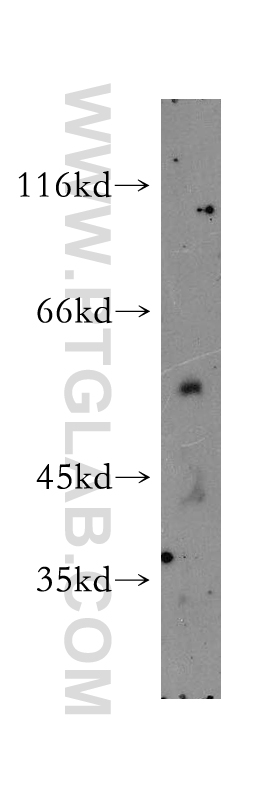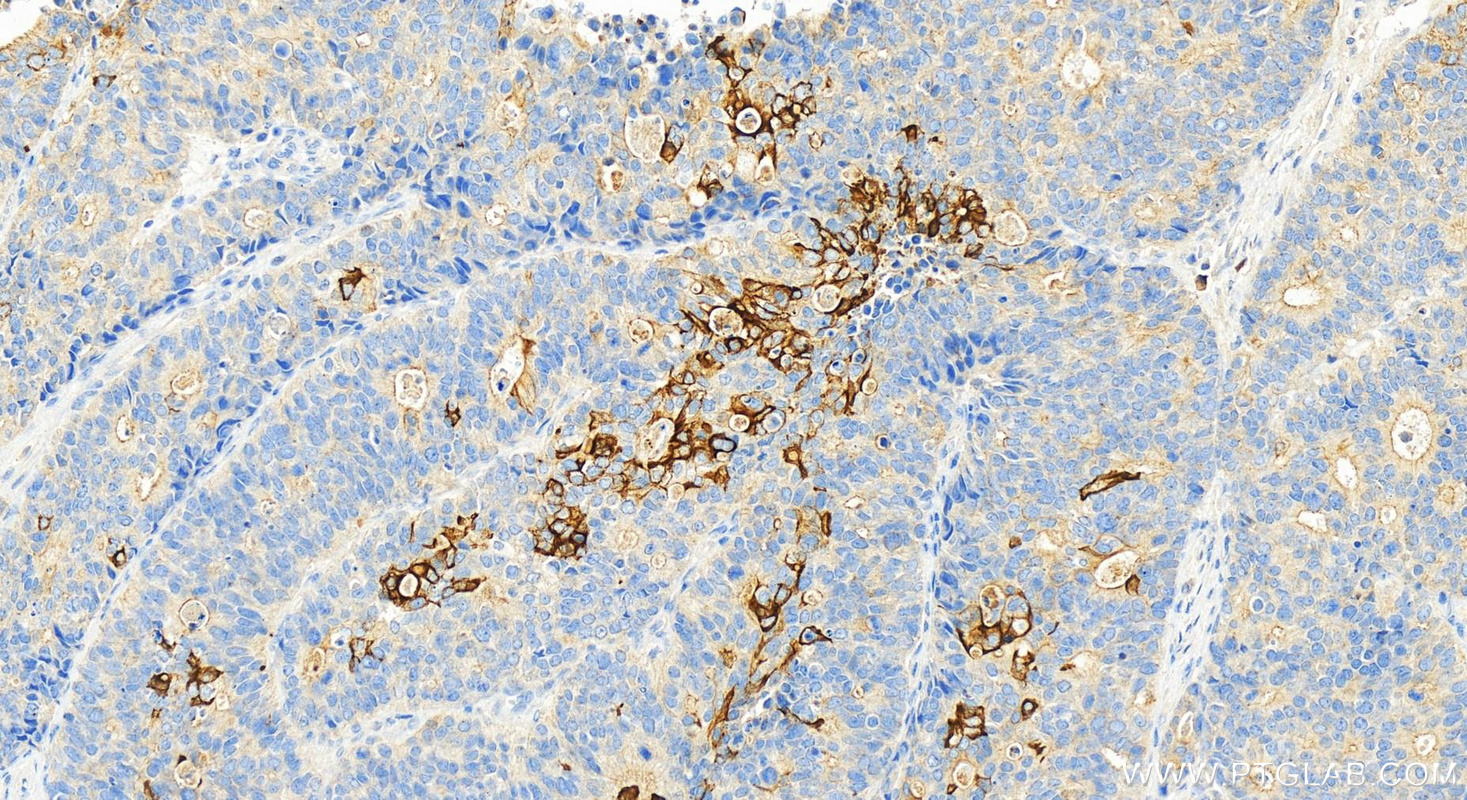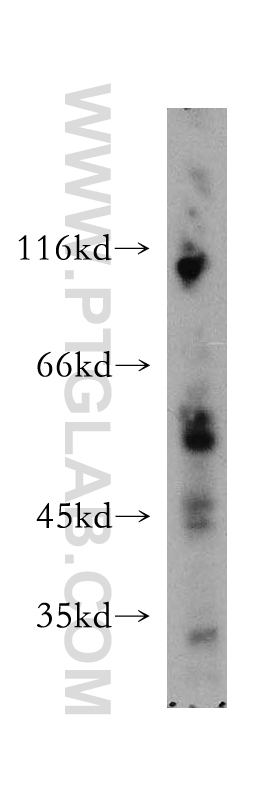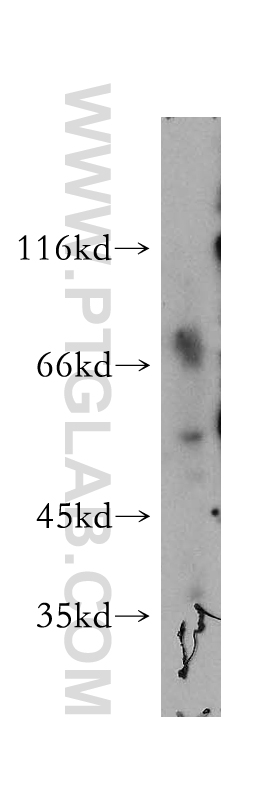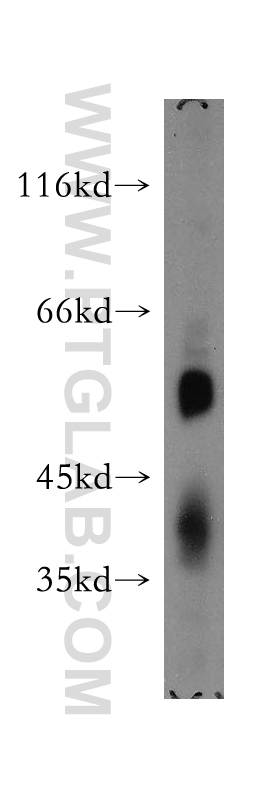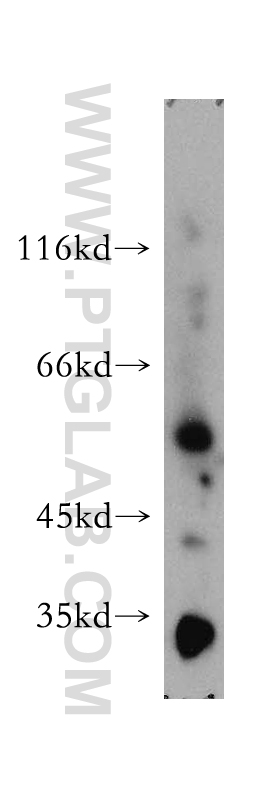验证数据展示
经过测试的应用
| Positive WB detected in | NIH/3T3 cells, human adrenal gland tissue, human plasma, mouse brain tissue, rat lymph tissue |
| Positive IHC detected in | human stomach tissue Note: suggested antigen retrieval with TE buffer pH 9.0; (*) Alternatively, antigen retrieval may be performed with citrate buffer pH 6.0 |
推荐稀释比
| 应用 | 推荐稀释比 |
|---|---|
| Western Blot (WB) | WB : 1:500-1:2000 |
| Immunohistochemistry (IHC) | IHC : 1:600-1:2400 |
| It is recommended that this reagent should be titrated in each testing system to obtain optimal results. | |
| Sample-dependent, Check data in validation data gallery. | |
产品信息
12799-1-AP targets SMAP1 in WB, IHC, ELISA applications and shows reactivity with human, mouse, rat samples.
| 经测试应用 | WB, IHC, ELISA Application Description |
| 经测试反应性 | human, mouse, rat |
| 免疫原 |
CatNo: Ag3544 Product name: Recombinant human SMAP1 protein Source: e coli.-derived, PGEX-4T Tag: GST Domain: 1-287 aa of BC036123 Sequence: MATRSCREKAQKLNEQHQLILSKLLREEDNKYCADCEAKGPRWASWNIGVFICIRCAGIHRNLGVHISRVKSVNLDQWTAEQIQCMQDMGNTKARLLYEANLPENFRRPQTDQAVEFFIRDKYEKKKYYDKNAIAITNISSSDAPLQPLVSSPSLQAAVDKNKLEKEKEKKKEEKKREKEPEKPAKPLTAEKLQKKDQQLEPKKSTSPKKAAEPTVDLLGLDGPAVAPVTNGNTTVPPLNDDLDIFGPMISNPLPATVMPPAQGTPSAPAAATLSTVTSGDLDLFTE 种属同源性预测 |
| 宿主/亚型 | Rabbit / IgG |
| 抗体类别 | Polyclonal |
| 产品类型 | Antibody |
| 全称 | small ArfGAP 1 |
| 别名 | Stromal membrane-associated protein 1, SMAP 1 |
| 计算分子量 | 467 aa, 50 kDa |
| 观测分子量 | 50-55 kDa |
| GenBank蛋白编号 | BC036123 |
| 基因名称 | SMAP1 |
| Gene ID (NCBI) | 60682 |
| RRID | AB_2272651 |
| 偶联类型 | Unconjugated |
| 形式 | Liquid |
| 纯化方式 | Antigen affinity purification |
| UNIPROT ID | Q8IYB5 |
| 储存缓冲液 | PBS with 0.02% sodium azide and 50% glycerol, pH 7.3. |
| 储存条件 | Store at -20°C. Stable for one year after shipment. Aliquoting is unnecessary for -20oC storage. |
背景介绍
SMAP1, also named as FLJ13159 and SMAP 1, contains a Arf-GAP domain. SMAP1 is a GTPase activating protein for ARF6 that binds clathrin and regulates clathrin-dependent endocytosis. SMAP1 may play a role in erythropoiesis. This antibody is a rabbit polyclonal antibody raised against residues near the N terminus of human SMAP1.
实验方案
| Product Specific Protocols | |
|---|---|
| IHC protocol for SMAP1 antibody 12799-1-AP | Download protocol |
| WB protocol for SMAP1 antibody 12799-1-AP | Download protocol |
| Standard Protocols | |
|---|---|
| Click here to view our Standard Protocols |

